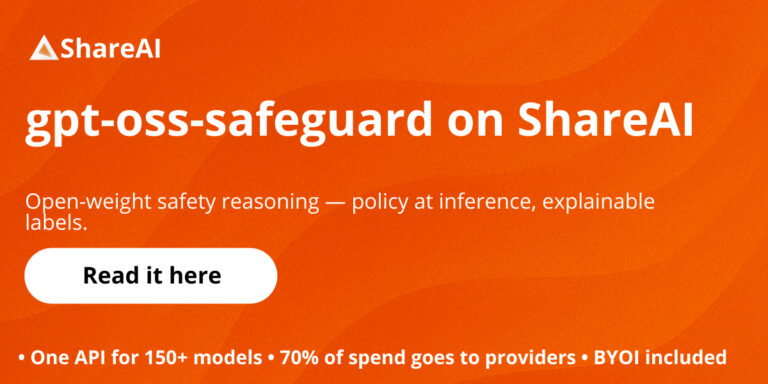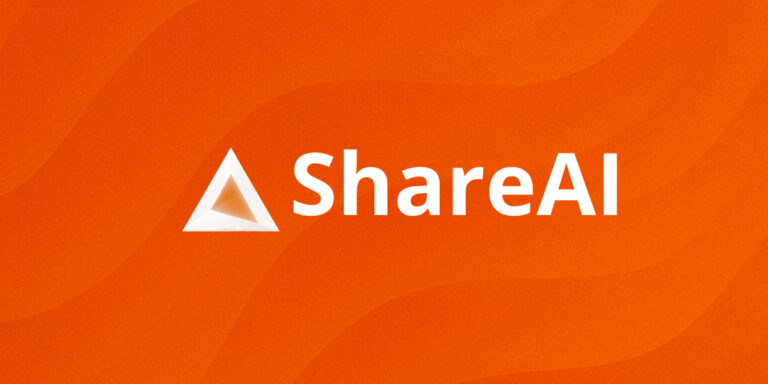APIPark Alternatives 2025: Top 10 APIPark Alternatives

Updated November 2025
If you’re searching for APIPark alternatives, this guide breaks down the landscape from a builder’s perspective. We’ll clarify where APIPark (AI Gateway) fits—an egress/governance layer for AI traffic—then compare the 10 best alternatives. We place ShareAI first for teams that want one API across many providers, a transparent marketplace (price, latency, uptime, availability, provider type before routing), instant failover, and people-powered economics (70% of spend goes to providers who keep models online).
Quick links
- Browse Models
- Open Playground
- Create API Key
- API Reference
- Read the Docs
- See Releases
- Sign in / Sign up
What APIPark is (and isn’t)

What it is. APIPark positions as an AI gateway/control layer: a place to centralize keys, apply policies/guardrails, and observe AI traffic as an API surface. It serves teams that want to govern AI egress across providers they already use.
What it isn’t. APIPark is not a transparent model marketplace that shows price/latency/uptime/availability across many providers before you route. If your priority is provider-agnostic choice and resilient multi-provider routing, you’ll likely pair a gateway with a marketplace API—or replace the gateway if governance needs are minimal.
Aggregators vs Gateways vs Agent platforms
- LLM Aggregators (marketplaces): One API across many models/providers with pre-route transparency and smart routing/failover. Example: ShareAI (multi-provider, marketplace view).
- AI Gateways: Policy/governance at the edge (keys, rate limits, guardrails) with observability. You bring your providers. Example: APIPark, Kong AI Gateway, Traefik, Apache APISIX (with AI backends).
- Agent/chatbot platforms: Packaged UX, memory/tools, and channels—geared to end-user assistants versus provider-agnostic aggregation. Example: Orq (orchestration-first).
How we evaluated the best APIPark alternatives
- Model breadth & neutrality: proprietary + open; easy switching; no rewrites.
- Latency & resilience: routing policies, timeouts, retries, instant failover.
- Governance & security: key handling, scopes, regional routing, guardrails.
- Observability: logs/traces + cost/latency dashboards.
- Pricing transparency & TCO: compare real costs before you route.
- Developer experience: docs, SDKs, quickstarts; time-to-first-token.
- Community & economics: whether your spend grows supply (incentives for GPU owners/providers).
Top 10 APIPark Alternatives
#1 — ShareAI (People-Powered AI API)
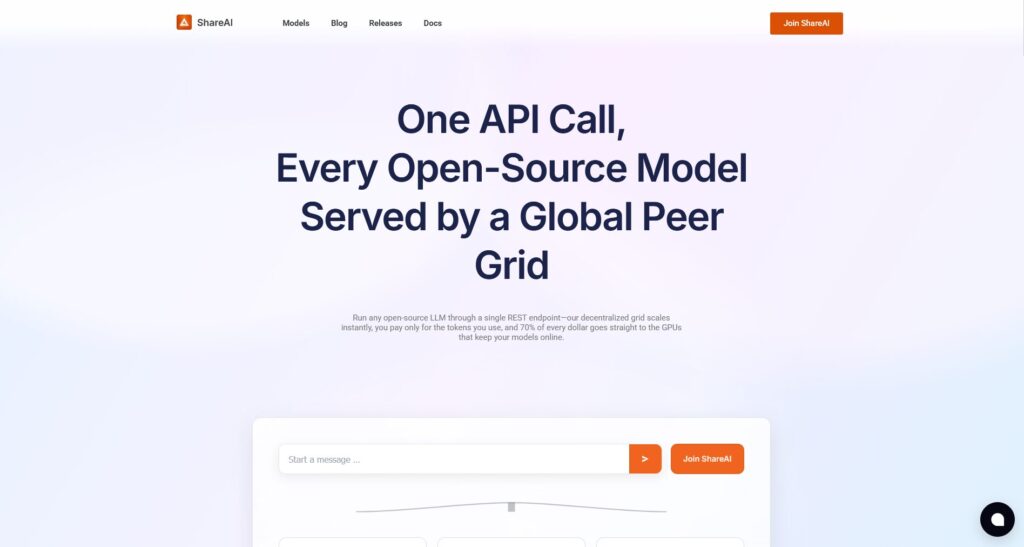
What it is. A multi-provider API with a transparent marketplace and smart routing. With one integration, browse a large catalog of models and providers, compare price, latency, uptime, availability, provider type, and route with instant failover. Economics are people-powered: 70% of every dollar flows to providers (community or company) who keep models online.
Why it’s #1 here. If you want provider-agnostic aggregation with pre-route transparency and resilience, ShareAI is the most direct fit. Keep a gateway if you need org-wide policies; add ShareAI for marketplace-guided routing.
- One API → 150+ models across many providers; no rewrites, no lock-in.
- Transparent marketplace: choose by price, latency, uptime, availability, provider type.
- Resilience by default: routing policies + instant failover.
- Fair economics: 70% of spend goes to providers (community or company).
- Quick links — Browse Models · Open Playground · Create API Key · API Reference · Docs · Releases
For providers: earn by keeping models online
Anyone can become a ShareAI provider—Community or Company. Onboard via Windows, Ubuntu, macOS, or Docker. Contribute idle-time bursts or run always-on. Choose your incentive: Rewards (money), Exchange (tokens/AI Prosumer), or Mission (donate a % to NGOs). As you scale, you can set your own inference prices and gain preferential exposure.
#2 — OpenRouter
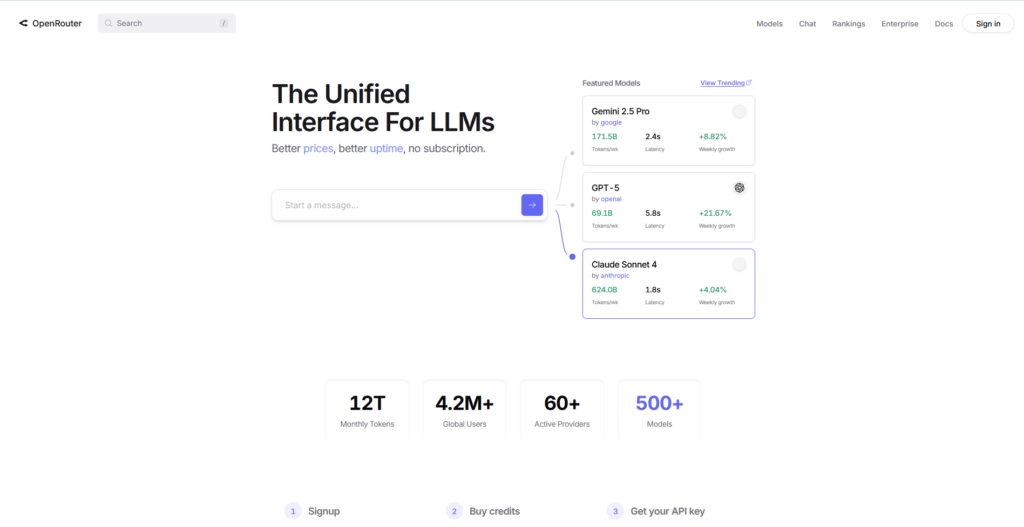
What it is. Unified API over many models; great for fast experimentation across a wide catalog.
Where it shines: quick multi-model access for devs; easy swaps.
Trade-offs vs ShareAI: marketplace transparency and routing/failover depth vary; ShareAI adds pre-route price/latency/uptime and instant failover.
#3 — Kong AI Gateway
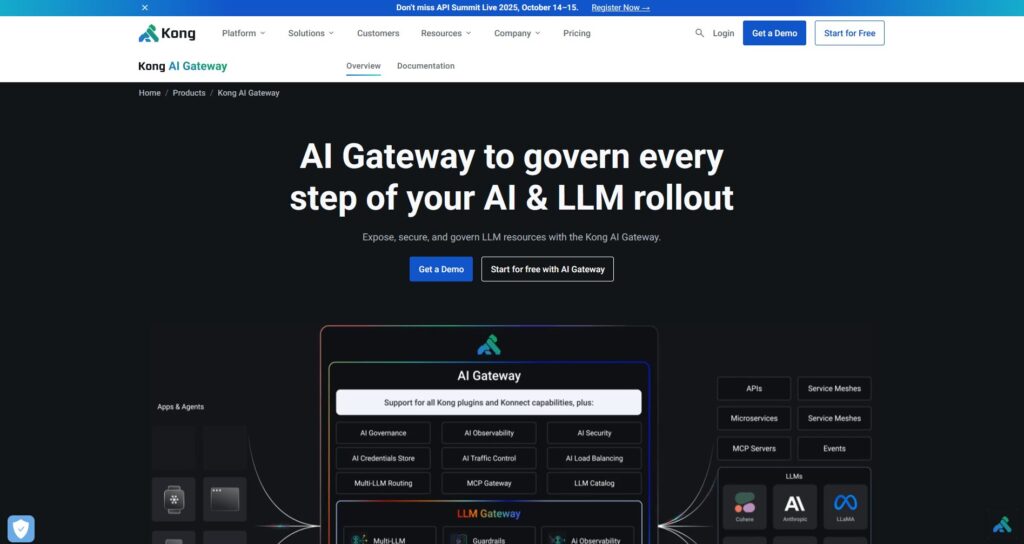
What it is. Enterprise AI/LLM gateway—governance, policies/plugins, analytics, observability for AI traffic at the edge.
Where it shines: organizations needing strong gateway-level control.
Trade-offs vs ShareAI: Kong is a control plane; it’s not a marketplace.
#4 — Portkey
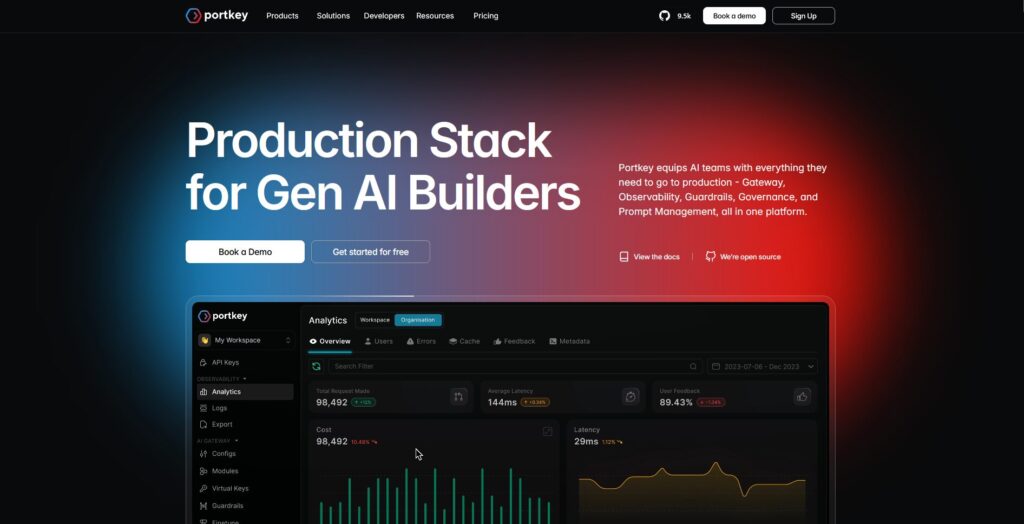
What it is. AI gateway emphasizing observability, guardrails, and governance—popular in regulated industries.
Where it shines: compliance/guardrails, deep traces.
Trade-offs vs ShareAI: governance-first vs provider-agnostic routing with transparency.
#5 — Eden AI
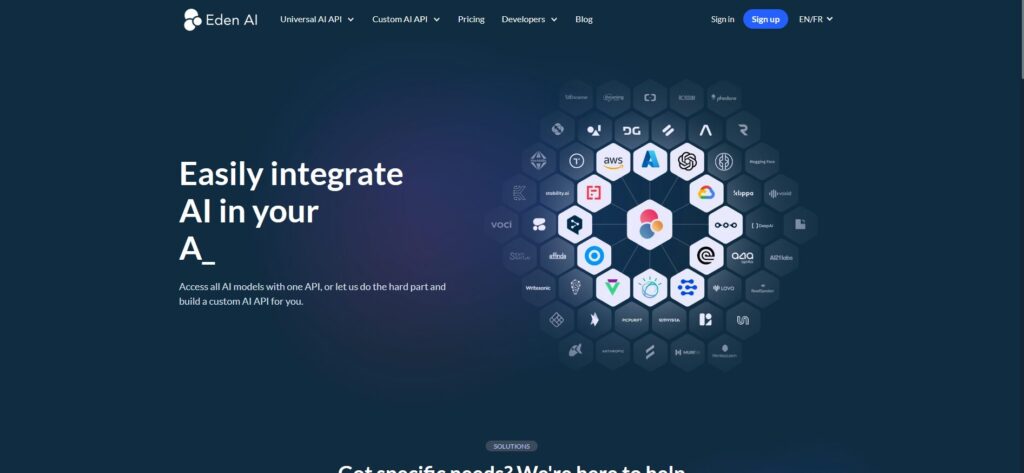
What it is. Aggregates LLMs plus broader AI (image, translation, TTS) with fallbacks, caching, and batching.
Where it shines: multi-capability workloads beyond LLMs.
Trade-offs vs ShareAI: broad catalog vs marketplace stats and failover depth.
#6 — LiteLLM
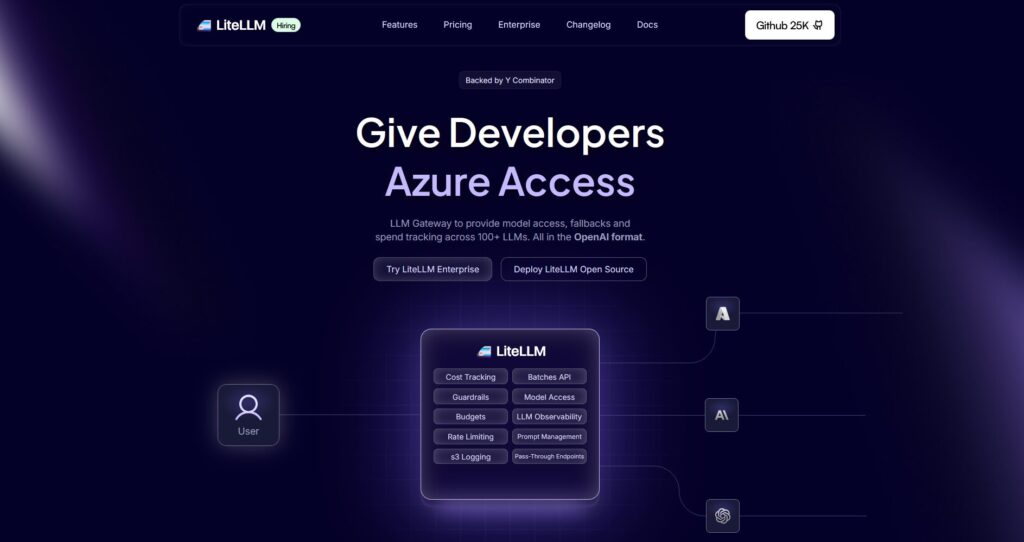
What it is. Lightweight Python SDK + self-hostable proxy that speaks an OpenAI-compatible interface to many providers.
Where it shines: DIY control, self-hosting.
Trade-offs vs ShareAI: you operate/scale the proxy; ShareAI is managed with instant failover and marketplace transparency.
#7 — Unify

What it is. Quality-oriented routing and evaluation to pick better models per prompt.
Where it shines: evaluation-driven selection.
Trade-offs vs ShareAI: evaluation focus vs marketplace + provider choice and resilience.
#8 — Orq AI

What it is. Orchestration/collaboration platform to move from experiments to production with low-code flows.
Where it shines: workflow orchestration.
Trade-offs vs ShareAI: orchestration vs multi-provider marketplace routing.
#9 — Apigee (with LLMs behind it)
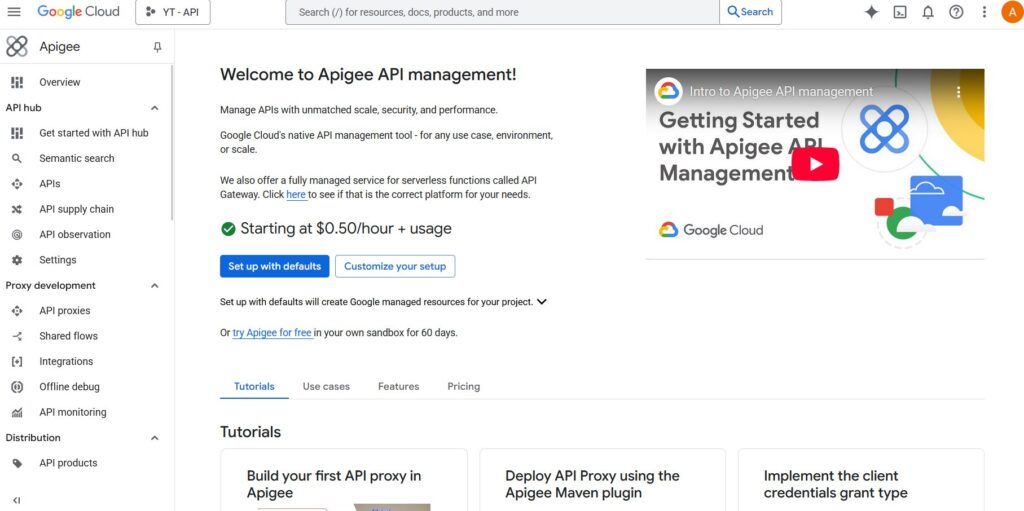
What it is. Mature API management/gateway you can place in front of LLM providers to apply policies, keys, quotas.
Where it shines: enterprise API management breadth.
Trade-offs vs ShareAI: governance breadth vs model/provider transparency.
#10 — Apache APISIX
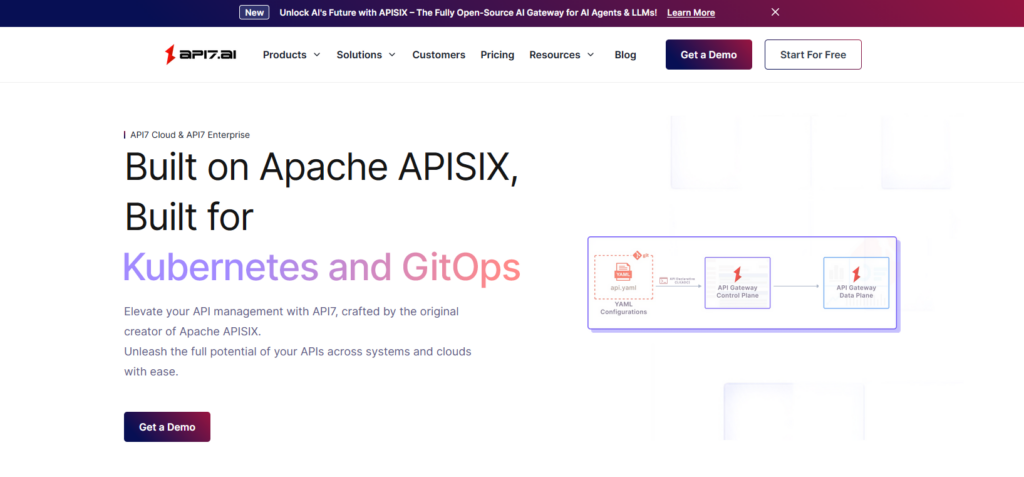
What it is. Open-source gateway with plugins, rate limiting, routing, and observability that can front AI backends.
Where it shines: open-source flexibility and plugin ecosystem.
Trade-offs vs ShareAI: DIY gateway engineering vs turnkey marketplace + failover.
APIPark vs ShareAI: which to choose?
- Choose ShareAI if you need one API across many providers with transparent pricing/latency/uptime/availability and instant failover.
- Choose APIPark if your top requirement is egress governance—centralized credentials, policy enforcement, and observability at the edge.
- Many teams run both: gateway for org policy + ShareAI for marketplace-guided routing.
Quick comparison (at a glance)
| Platform | Who it serves | Model breadth | Governance & security | Observability | Routing / failover | Marketplace transparency | Provider program |
|---|---|---|---|---|---|---|---|
| ShareAI | Product/platform teams needing one API + fair economics | 150+ models, many providers | API keys & per-route controls | Console usage + marketplace stats | Smart routing + instant failover | Yes (price, latency, uptime, availability, provider type) | Yes — open supply; 70% to providers |
| APIPark | Teams wanting egress governance | BYO providers | Centralized credentials/policies | Metrics/tracing | Conditional routing via policies | No (infra tool, not a marketplace) | n/a |
| Kong AI Gateway | Enterprises needing gateway-level policy | BYO | Strong edge policies/plugins | Analytics | Proxy/plugins, retries | No (infra) | n/a |
| Portkey | Regulated/enterprise teams | Broad | Guardrails & governance | Deep traces | Conditional routing | Partial | n/a |
| OpenRouter | Devs wanting multi-model access | Wide catalog | Basic API controls | App-side | Fallbacks | Partial | n/a |
| Eden AI | Teams needing LLM + other AI services | Broad | Standard controls | Varies | Fallbacks/caching | Partial | n/a |
| LiteLLM | DIY/self-host proxy | Many providers | Config/key limits | Your infra | Retries/fallback | n/a | n/a |
| Unify | Quality-driven teams | Multi-model | Standard API security | Platform analytics | Best-model selection | n/a | n/a |
| Orq | Orchestration-first teams | Wide support | Platform controls | Platform analytics | Orchestration flows | n/a | n/a |
| Apigee | Enterprises / API mgmt | BYO | Policies | Add-ons | Custom | n/a | n/a |
| Apache APISIX | Open-source/DIY | BYO | Policies/plugins | Prometheus/Grafana | Custom | n/a | n/a |
Tip: If you keep a gateway for org policy, you can still route per request via ShareAI using marketplace data (price, latency, uptime, availability, provider type) to choose the best provider and failover target.
Pricing & TCO: compare real costs (not just unit prices)
Raw $/1K tokens hides the real picture. TCO shifts with retries/fallbacks, latency (which affects usage), provider variance, observability storage, and evaluation runs. A transparent marketplace helps you choose routes that balance cost and UX.
TCO ≈ Σ (Base_tokens × Unit_price × (1 + Retry_rate))
+ Observability_storage
+ Evaluation_tokens
+ Egress
- Prototype (~10k tokens/day): Optimize time-to-first-token (Playground, quickstarts).
- Mid-scale (~2M tokens/day): Marketplace-guided routing/failover can trim 10–20% while improving UX.
- Spiky workloads: Expect higher effective token costs from retries during failover; budget for it.
Migration guides
From APIPark → ShareAI (complement or replace)
Keep gateway-level policies where they shine; add ShareAI for marketplace routing + instant failover. Common pattern: gateway auth/policy → ShareAI route per model → measure marketplace stats → tighten policies.
From OpenRouter
Map model names, verify prompt parity, then shadow 10% of traffic and ramp 25% → 50% → 100% as latency/error budgets hold. Marketplace data makes provider swaps straightforward.
From LiteLLM
Replace the self-hosted proxy on production routes you don’t want to operate; keep LiteLLM for dev if desired. Compare ops overhead vs managed routing benefits.
From Unify / Portkey / Orq / Kong / APISIX / Apigee
Define feature-parity expectations (analytics, guardrails, orchestration, plugins). Many teams run hybrid: keep specialized features where they’re strongest; use ShareAI for transparent provider choice and failover.
Developer quickstart (copy-paste)
The following use an OpenAI-compatible surface. Replace YOUR_KEY with your ShareAI key—get one at Create API Key.
#!/usr/bin/env bash
# cURL (bash) — Chat Completions
# Prereqs:
# export SHAREAI_API_KEY="YOUR_KEY"
curl -X POST "https://api.shareai.now/v1/chat/completions" \
-H "Authorization: Bearer $SHAREAI_API_KEY" \
-H "Content-Type: application/json" \
-d '{
"model": "llama-3.1-70b",
"messages": [
{ "role": "user", "content": "Give me a short haiku about reliable routing." }
],
"temperature": 0.4,
"max_tokens": 128
}'
// JavaScript (fetch) — Node 18+/Edge runtimes
// Prereqs:
// process.env.SHAREAI_API_KEY = "YOUR_KEY"
async function main() {
const res = await fetch("https://api.shareai.now/v1/chat/completions", {
method: "POST",
headers: {
"Authorization": `Bearer ${process.env.SHAREAI_API_KEY}`,
"Content-Type": "application/json"
},
body: JSON.stringify({
model: "llama-3.1-70b",
messages: [
{ role: "user", content: "Give me a short haiku about reliable routing." }
],
temperature: 0.4,
max_tokens: 128
})
});
if (!res.ok) {
console.error("Request failed:", res.status, await res.text());
return;
}
const data = await res.json();
console.log(JSON.stringify(data, null, 2));
}
main().catch(console.error);
Security, privacy & compliance checklist (vendor-agnostic)
- Key handling: rotation cadence; minimal scopes; environment separation.
- Data retention: where prompts/responses are stored and for how long; redaction defaults.
- PII & sensitive content: masking; access controls; regional routing for data locality.
- Observability: prompt/response logging; ability to filter or pseudonymize; propagate trace IDs consistently.
- Incident response: escalation paths and provider SLAs.
FAQ — APIPark vs other competitors (and where ShareAI fits)
APIPark vs ShareAI — which for multi-provider routing?
ShareAI. It’s built for marketplace transparency (price, latency, uptime, availability, provider type) and smart routing/failover across many providers. APIPark is about egress governance (centralized credentials/policy; observability). Many teams use both.
APIPark vs OpenRouter — quick multi-model access or governance?
OpenRouter makes multi-model access quick; APIPark centralizes policy and observability. If you also want pre-route transparency and instant failover, ShareAI combines multi-provider access with a marketplace view and resilient routing.
APIPark vs Kong AI Gateway — gateway vs marketplace?
Both APIPark and Kong are gateways (policies, plugins, analytics), not marketplaces. Pair a gateway with ShareAI for transparent multi-provider routing and failover.
APIPark vs Portkey — who’s stronger on guardrails?
Both emphasize governance/observability; depth and ergonomics differ. If your main need is transparent provider choice and failover, add ShareAI alongside either gateway.
APIPark vs Apache APISIX — open-source DIY or managed controls?
APISIX gives plugin-rich, open-source gateway control; APIPark provides managed governance. To avoid DIY complexity while also getting transparent provider selection, layer in ShareAI.
APIPark vs Traefik — two gateways, different ecosystems
Both govern AI egress with policies and observability. If you want one API over many providers with live marketplace stats, ShareAI complements either.
APIPark vs NGINX — DIY filters vs turnkey AI layer
NGINX offers DIY filters/policies; APIPark offers a packaged layer. To skip custom scripting and still get transparent provider choice, use ShareAI.
APIPark vs Apigee — broad API management vs AI-specific egress
Apigee is broad API management; APIPark is AI-focused egress governance. For provider-agnostic access with marketplace transparency, choose ShareAI.
APIPark vs LiteLLM — self-host proxy or managed governance?
LiteLLM is a DIY proxy you operate; APIPark is managed governance/observability. If you’d rather not run a proxy and want marketplace-driven routing, choose ShareAI.
APIPark vs Unify — best-model evaluation vs policy enforcement?
Unify focuses on evaluation-driven model selection; APIPark on policy/observability. For one API over many providers with live marketplace stats, use ShareAI.
APIPark vs Eden AI — many AI services or egress control?
Eden AI aggregates several AI services (LLM, image, TTS). APIPark centralizes policy/credentials with specialized AI middlewares. For transparent pricing/latency across providers and instant failover, choose ShareAI.
OpenRouter vs Apache APISIX — aggregator vs open-source gateway
OpenRouter simplifies model access; APISIX provides gateway control. Add ShareAI if you want pre-route transparency and failover across providers without operating your own gateway.
Try ShareAI next
- Open Playground — run a live request to any model in minutes
- Create your API key
- Browse Models
- Read the Docs
- See Releases
- Sign in / Sign up
